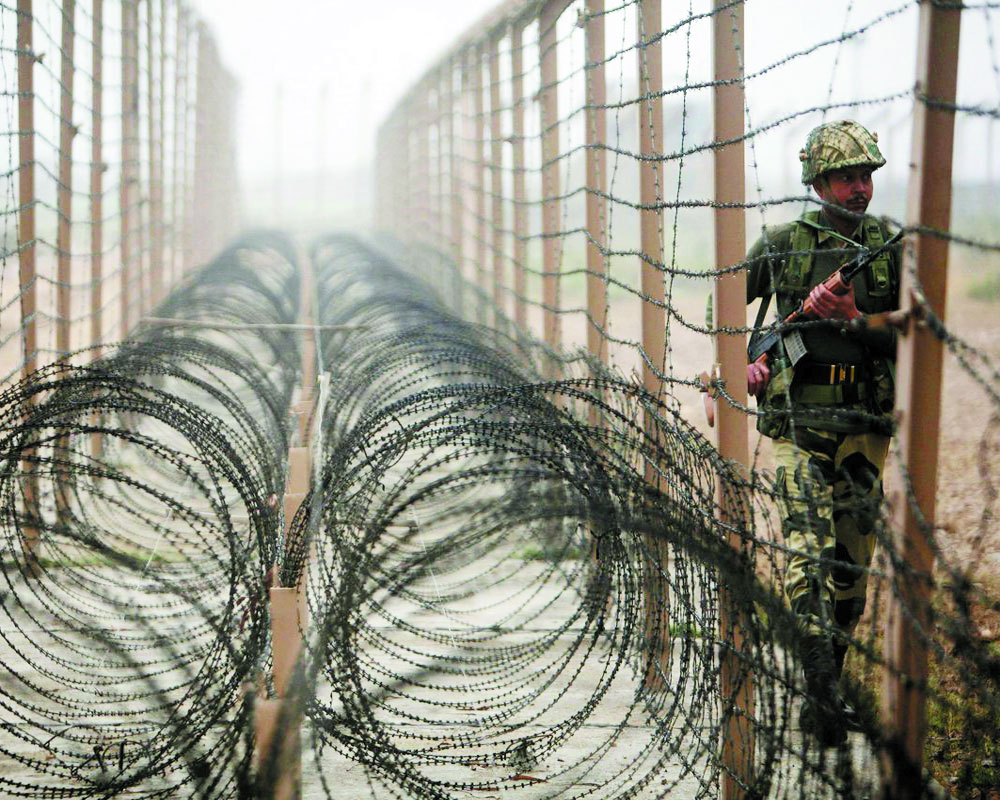A new smart fencing project seeks to address the gaps in our border security system through high-tech surveillance equipment, writes Srinath Rangarajan
Security challenges and their management in border areas have always remained tense and complicated. More so in a country like India where a variety of geographical features can be found across borders like mountains, deserts, swampy marshes or even tropical evergreen jungles. Adding to all these is the hostile nature of our neighbouring countries. Democracy as a sustainable feature could not be seen in many of these countries over the decades and a glimmer of hope is coming up only in recent years. All these have made border management quite complex and unique. There is cross-border smuggling of drugs, cattle, and fake currency notes other than the issues of terrorist infiltration and insurgency.
It is in this context that we need to critically analyse the proposed smart fencing projects working under the Comprehensive Integrated Border Management Systems (CIBMS). Two pilot projects are being executed in two 5-km stretches across the India-Pakistan international border presently.
Basically, the CIBMS seeks to address the present gaps in our border security system through high-tech surveillance equipment, which combine five sensors namely the radar sensor, electro optic sensor, ground sensor, micro aerostat sensor, and the OFC based sensor. It also intends to develop an efficient and dedicated communication network, and a command and control centre, which can act as an effective back end support. This project has the potential to change the way our forces operate on the border by moving away from the age-old practice of physical patrolling. It can help in detecting infiltrations via land, sea, and through tunnels by using CCTVs, thermal imagers, and night vision devices. Most importantly, it seeks to eliminate human error and increase the efficiency of working.
While the stated benefits are immense, the operational challenges continue to remain. Dr NC Asthana, Additional Director of BSF, in a seminar organised by FICCI on smart border management pointed out that 12.36 per cent of the Indo-Pakistan border is riverine, while 37 per cent of the Indo-Bangladesh border is riverine. Water bodies across borders create certain difficulties like changing course of the river, difficulty in detecting intrusions etc. If one were to get a little technical, the ambient noise in water bodies makes it difficult to determine the precise nature of the activity, thereby increasing the scope for false alarms. Thus, we may have to require a software of the capability of a sonar to filter out the ambient noise and bring out the characteristic signature of the activity. Over and above this, we may also need to maintain a library of characteristic signatures of possible suspicious activities, like cattle smuggling, to ensure proper functioning.
While the exact fine print of how the smart fence will be executed across the borders remains to be seen, we need to digest the fact that we cannot go with a one-size-fits-all approach. The geographical terrain across borders keeps varying every 10m in certain areas and this needs to be borne in mind. We simply cannot take an Israeli design and replicate it over here. It needs to be in line with the local geography. Apart from this, we have certain other issues. Take the example of the India-Myanmar border, which is extremely porous. Villagers own land on both sides and there are cross-ethnic ties among tribal communities. The Government of India’s plan to fence 10 km of area has met with huge protests from the local tribals and the plan was halted subsequently. But at the same time, insurgents are extensively involved in drug trafficking in areas across Manipur border. In such a scenario, how does a smart fence work? It is the puzzling and sensitive situations like these which need to be given a thought and worked out before the actual plan is put to execution.
Needless to say that issues of network connectivity, erratic power supply, and exorbitant cost of the project will continue to linger, considering the nature and difficulty of the terrain where the project will be executed. These are issues which need to be looked at in tandem and addressed in a long-term perspective.
Once the whole plan of action is frozen, we also need to plan for acquiring the required technical expertise from the end user (BSF, Assam Rifles, or the relevant Para Military Force) to operate the platform. The software which provides the platform should be simple and comprehendible. It would be better if the software uses maps and other features which the jawans at the border posts are used to, rather than creating a new one.
While technological solutions are definitely the need of the hour, we cannot rely solely on technology. Political solutions for resolving the border disputes with Pakistan and China need to be pursued, which by any means of optimism are nowhere to be seen in the near future. Upgradation of intelligence network and other measures for border management in synchronisation with technology can only bring about effective border management.
The writer is a Senior Engineer in Vijay Nirman Company. Views are personal


























